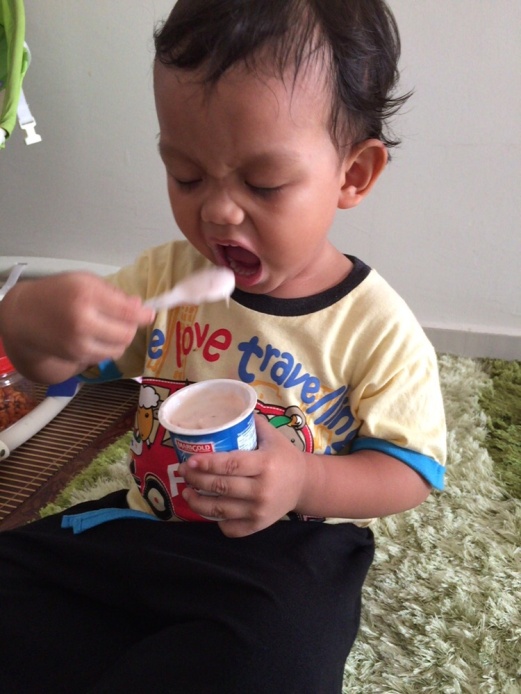
Introduction
Eating and drinking activity is a basic of life. Furthermore, the activities are fun.
However, the activity can be difficult and challenging for some people. Therefore, they may need others to help them to get, and to feed the food and drink to their mouth.
An appropriate feeding utensils adaptation can help individual to:
- Enjoy the eating and drinking activity in a better way
- Improve the patient’s quality of life
- Encourage independence for eating and drinking
Feeding utensils adaptation should be able to be used at home, school and community. The adaptations made has to be suited with an individual needs.
Who Needs Feeding Utensils Adaptation?
Individual who may need feeding utensils adaptation are as below:
- Physical disability
- Arthritis
- Poor/weak fine motor skills – difficulty to grasp
- Parkinson disease
What is the Feeding Utensils Adaptation that can be used?
There are several feeding utensils that can be adapted to suit the needs of an individual for eating and drinking activity.
Collaboration with the Occupational Therapist in identifying and suggesting a suitable feeding utensil is important to suit the needs of the patient.
Feeding utensils adaptation, such as spoon, fork, plate, bowl and cup will give a big impact to an individual per se. These feeding utensils will help the patient to enjoy their eating and drinking activity in their daily life.
Feeding utensils adaptation for eating and drinking are as below:
- Big handle
- Fork and spoon with angled handles
- Adding weight to the utensils
Below, are some of the feeding utensils used for eating and drinking activity :
- Cup
- Cut-out-cup
To prevent the cup from touching the nose.
To avoid head extension when drinking.
- Cup with a lid with a spout
To prevent the liquid spilt out from the cup.
To control the flow of the liquid to the mouth.
The spout helps for lip closure.
- Cut-out-cup
- Straw
Straw drinking helps an individual to develop certain activities such as sucking, lip closure, strengthening and controlling, and positioning of the head down when drinking.
An attractive straw will motivate the child to use it for drinking.
- Spoon
Spoon adaptation can be used for children with hypersensitive or those who easily to gag (an automatic reaction a feeling to vomit).
Consider the size and the scoop of the spoon, the materials, shape and the length of the handle.
- The scoop of the spoon is equal to the child’s mouth
- A spoon with deep scoop makes the child difficult to get the food from the spoon
- Use a spoon that is made of a durable material that is not easily broken when bitten
- A steel spoon can hurt the child. Use a spoon that is made of a nylon, plastic or covered with a latex especially for children with hypersensitive to hot or cold temperature
Example:
- Built-up handle
There are two types of modifications that can be done either enlarged the handle, or enlarged and weighted the handle. The use of a spoon modification is different for each type.
A large spoon handle is suitable for children who lack of hand-manipulation skill or poor hand skill development. This modification helps these children to grasp and feed the spoon to mouth.
The weighted handle of the spoon is helpful for children with uncontrollable hand movement. For example, children
with a brain injury or cerebral palsy, which aims to reduce tremor when using a spoon. - Bent-handle spoon
This spoon is used for a child with limited movement.
It helps to bring the food to the mouth with less movement of the arm, wrist, and hand.
- Plastic-coated utensilsSuitable for children with teeth and gum sensitivity.
- Plate and bowl
- A raised edge or a plate guardA high surface around the plate helps children to get the food with the spoon.
- Dycem or non-skid pressure-sensitive padsIt is placed at the bottom of the bowl to prevent the bowl from slipping out of the table.
Tips of Adaptation and Feeding Utensils
- Observe the surroundings where an individual used to have their meal (at home, school), types of food and a preparation time.
- Respect the parent’s and the children’s needs, values and routines.
- Avoid feeding utensils adaptation if a child has a potential to achieve normal feeding skills.
- Parent, children, teacher and therapist need to work together in decision making regarding the feeding utensils adaptations if needed.
- Use utensils that have the fewest barriers to allow the child to use the utensil independently.
- Use utensil that is durable and easy to be cleaned off. It has to be suitable with an individual level of developmental milestones.
- Ensure the correct position during feeding. Use feeding utensils adaptation if needed. Seat an upright position with a 90° sitting, head at the midline of the body, and support the feet.
References
- Novita.Speech Pathology (2008). Glossary of mealtime terms. ©Novita Children’s Services Inc. Retrieved September 2, 2015, from http://www.novita.org.au/library/Factsheet-OED-26-glossary_mealtime_terms.pdf
- Yeung, Y.L. (). Adaptive Feeding Equipment For Children with Special Needs. TelAbility. Retrieved September 2, 2015, from http://www.telability.org/handouts/TelAbilityHandoutAdaptiveFeedingEquipment.PDF
| Last Reviewed | : | 28 August 2020 |
| Writer / Translator | : | Nurshahira bt. Razali |
| Accreditor | : | Wahida bt. Mohd Abd Wahab |
| Reviewer | : | Nadwah bt. Onwi |







